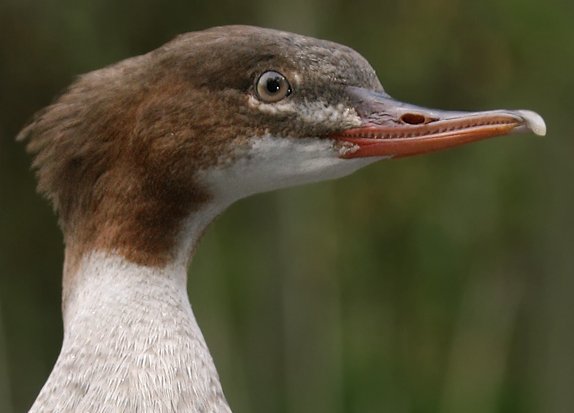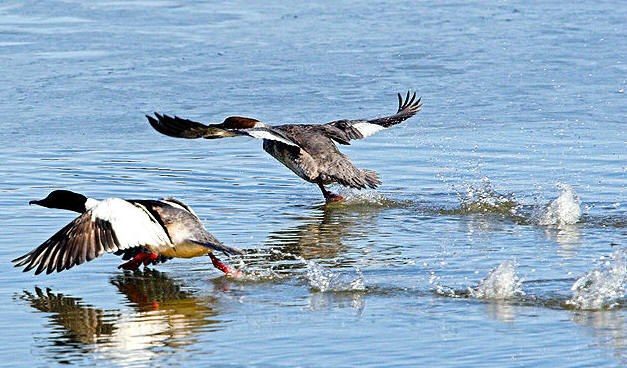Adaptation
Unlike other ducks, common mergansers possess
saw-like teeth in their becks. This is a distinguishing characteristic from
other ducks. This feature makes them excellent hunters. The serrated beck
aids common mergansers in capturing and holding onto fish. Common merganser
becks are wider and thicker at the base compared to the red-breasted
merganser (a close relative) which also helps them grasp fish.
Amniotic Eggs
The amniotic egg was a huge advancement in the
animal world. This is what allowed organisms to move away from the water.
The amniotic egg gives the embryo an ideal environment to develop without
drying out. The egg is broken down into various components to provide the
embryo with water, nutrients, and waste remove. The outer shell of the egg
is strong and sturdy for support but also allows for gas exchange of oxygen
and carbon dioxide.
Flight is made possible by a few different
adjustments of bird’s body. Birds have reduced skeletons which contain
hollow bones. This makes the bird much lighter so they can fly easier. Birds
also have a keeled sternum which provides extra area for muscle attachment.
Although common mergansers are very fast flyers, it takes them a while to
actually get air borne. When a common merganser takes off, it must “run”
across the water surface for several yards before entering the air. The wing
arc on common mergansers is rather shallow compared to how fast it can fly.
The wings barely extend below the plane of the body. During flight, common
mergansers tend to fly in lines a few feet about the water’s surface.
Questions? Comments? Concerns? contact me at bales.aman@students.uwlax.edu
For more interesting organisms visit multiplerganisms.net

